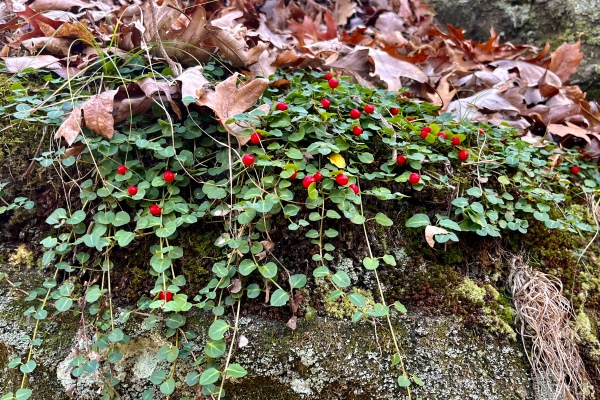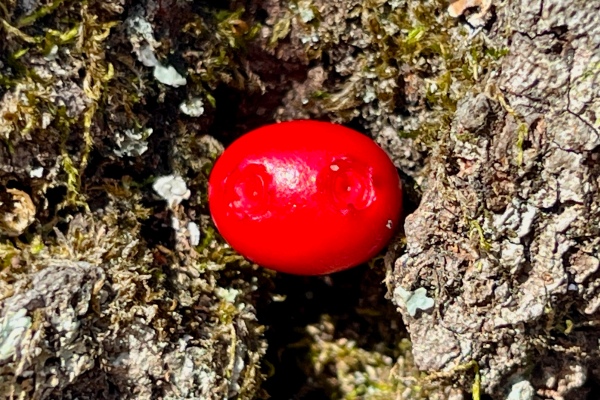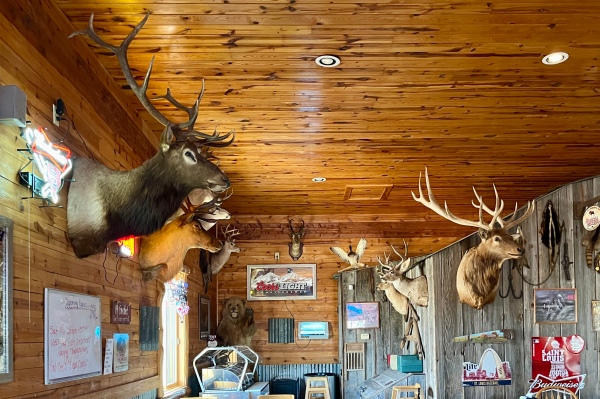Today I joined the WGNSS Botany Group as we hiked a portion of the Whispering Pines Trail to look for a rare clubmoss, then bushwhacked back to the beginning and went off-trail to a nearby sandstone box canyon to look for rare ferns. We found the clubmoss—Diphasiastrum tristachyum (blue clubmoss)—growing in the shortleaf pine/scarlet oak forest atop a LaMotte Sandstone cliff. Though common in eastern North America and Eurasia, the area in and around Hawn State Park is the only known station for the plant in Missouri, and this population is highly distinct from the next nearest population in Tennessee.


We also found the ferns in the box canyon along with Mitchella repens (partrideberry) growing on the moist sandstone bluff faces of the canyon. This plant is not as rare in Missouri as blue clubmoss, but it is still seldom encountered outside of the LaMotte Sandstone forests of Ste. Genevieve County. An interesting feature of the berries is that they require two flowers to be fertilized and then develop together into a single berry—if you look closely at the berry you can see two “dimples” representing the remnants of the two flowers.



As we hiked I paid attention to the grasses (family Poaceae), which were as diverse as anywhere I’ve been lately (at least, since I’ve started paying attention to such things). Many of them I can recognize easily—river oats (Chasmanthium latifolium), little bluestem (Schizachyrium scoparium), Broomsedge bluestem (Andropogon virginica), etc, but many more were new to me, including several species in the large and diverse genus Dichanthelium (rosette grasses). For most of them, rather than trying to identify in the field, I collected samples to look more closely at home with a microscope and my copy of “Steyermark’s Flora of Missouri.”

One of them seems to be D. commutatum var. ashei (Ashe’s panic grass) [identified by Nathan Aaron via iNaturalist], which is distinguished by habitat (intact sandstone or chert woodlands), nodes not hairy, and small stature with leaves clustered towards the tip of the stem. We also saw (but I did not photograph) the common woodland D. boscii, which is larger and has massive spikelets and famously long-hairy nodes. I’ll share the full list here when I can, but it probably numbers around a dozen species.

Insects were not numerous, despite the pleasant conditions, but I did see and manage to photograph a fiery skipper (Hylephila phyleus—family Hesperiidae).

After the outing, several of us enjoyed lunch at the Midway Bar & Grill in Weingarten, Missouri. I had an elk burger, yum!

©️ Ted C. MacRae 2023